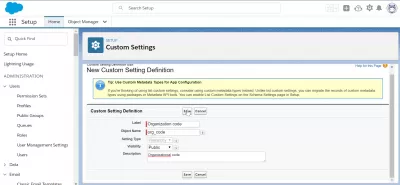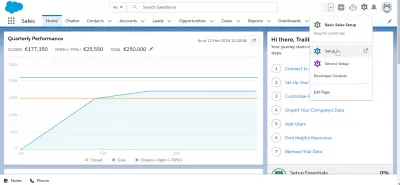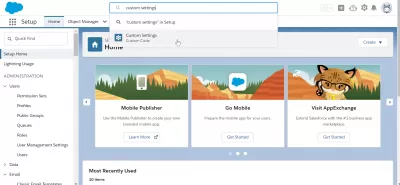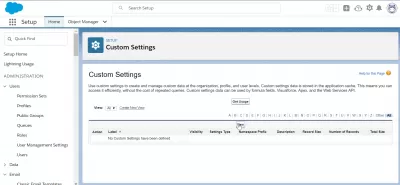Salesforce: How to Use Custom Settings?
Utilizing your custom settings generates unique sets of data to connect unique information for an organization, a user, or a profile.
Using custom settings will let you alter org data, much like custom objects do. It lets you use specific data sets throughout your organization versus custom objects that already contain information based on existing data. Additionally, you may differentiate between individual people or accounts using custom settings.
The program cache provides customizable settings information, allowing easy accessibility while paying the penalty of repetitive database questions.
Why do you need to customize your settings?
The advantages of the platform are a simple and convenient user interface and administration tools that allow you to configure the deployment of the system in line with the expansion of the business. Custom setting in Salesforce will allow each user to configure a platform for comfortable work.
There are many advantages to knowing how to customize and create your settings. Here are some of them:
Customers must provide the zip codes for overseas delivery in a logistic program. Clients now have rapid access to this information without having to search for information, thanks to creating a collection item of all zip codes.
The optimum route to go, congestion circumstances, and a chart of account placements are all displayed via a program. Sales representatives might benefit from this knowledge, while account directors are only interested in account placements. You may allow this information for only the Sales Rep profiles by adding a hierarchical configuration with unique tick boxes for pathway and volume.
Hierarchy dictates pricing, but an app generates and records income for its sales representatives. The manager can assign a separate compensation percentage to every account in the marketing team by defining a hierarchical configuration. The program may thus utilize a single equation field to determine compensation for each user. The appropriate payment percentage is inserted by the customized setting at the account level.
How to customize your settings?
Customizing your parameters is vital to operating your business. By doing so, you can control your parameters, monitor storage capacity, and allow access to the people you need to be in charge of. To customize your settings, follow the steps below:
1. Examine your security and confidentiality choices.
Information privacy prevents businesses, cybercriminals, governments, and other parties from accessing data you'd want to stay hidden. Everyone has a different notion of data confidentiality. You can customize your visibility and schema settings and give access to user profiles or permission parameters.
2. Customize the parameters or settings.
You may generate a new setting on the Salesforce website by selecting Custom Settings from Setup and typing Custom Settings in the search box. By selecting Manage on the summary page upon establishing a specialized setting and adding fields, you may add information to it.
3. Supplement the data and fields
Navigate to Fields in the administration settings for the item you wish to add a value to. The executing process parameters for Activities provide entry to customized assignment and event fields. Select New. Note You can also define field constraints and field record monitoring for customized objects in this area. It is important to remember that rather than utilizing custom settings, we highly advise applying unique metadata types. In contrast to listing custom settings, you may use Metadata API utilities or secondary packages to transfer the entries of unique metadata kinds.
4. Use the information in your program to link to the information from the custom setting.
What are the limitations of Customizing your settings?The critical elements and limitations on the volume of stored information should be considered when dealing with customized settings.
Particular objects can have custom settings. Each custom option reduces the overall percentage of custom objects accessible to your company.
The smaller of these two numbers is the total sum of stored information permitted for your organization: 10 MB, 1 MB times how many full-featured users licenses your organization has.
Suppose you get 3 MB of memory capacity for custom settings, for instance, if your organization has three complete subscriptions. Your organization receives 10 MB of memory if it has 20 exclusive licenses.
You also each get certified maintained bundles that have their restriction. Depending on the number of subscriptions up to 10 MB, every verified managed package receives the same limit as the organization. For illustration, suppose your organization has up to three permits and two verified managed packages deployed. On top of the 3 MB limit for your org, every verified managed package will also contain 3 MB of personalized configuration memory capacity.



